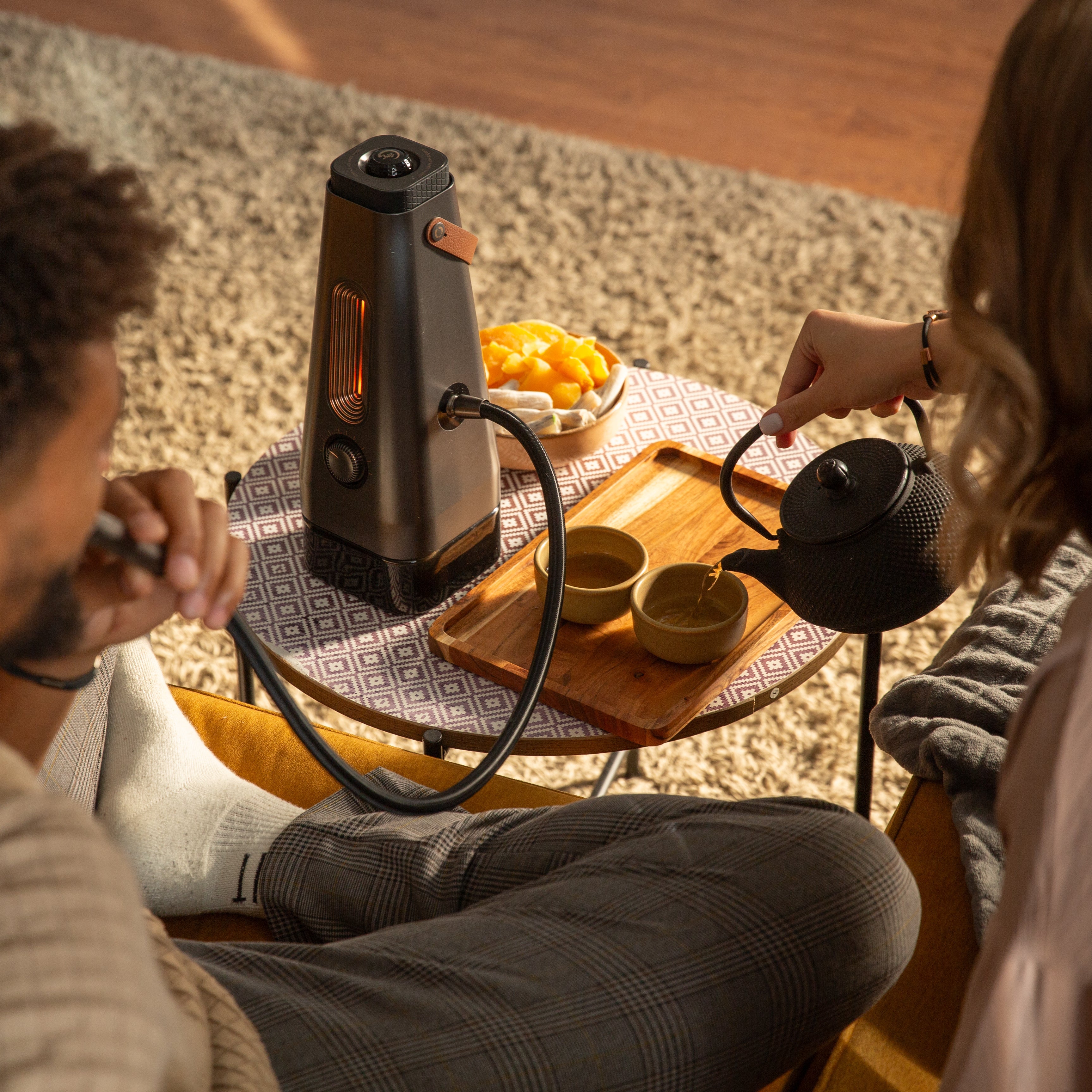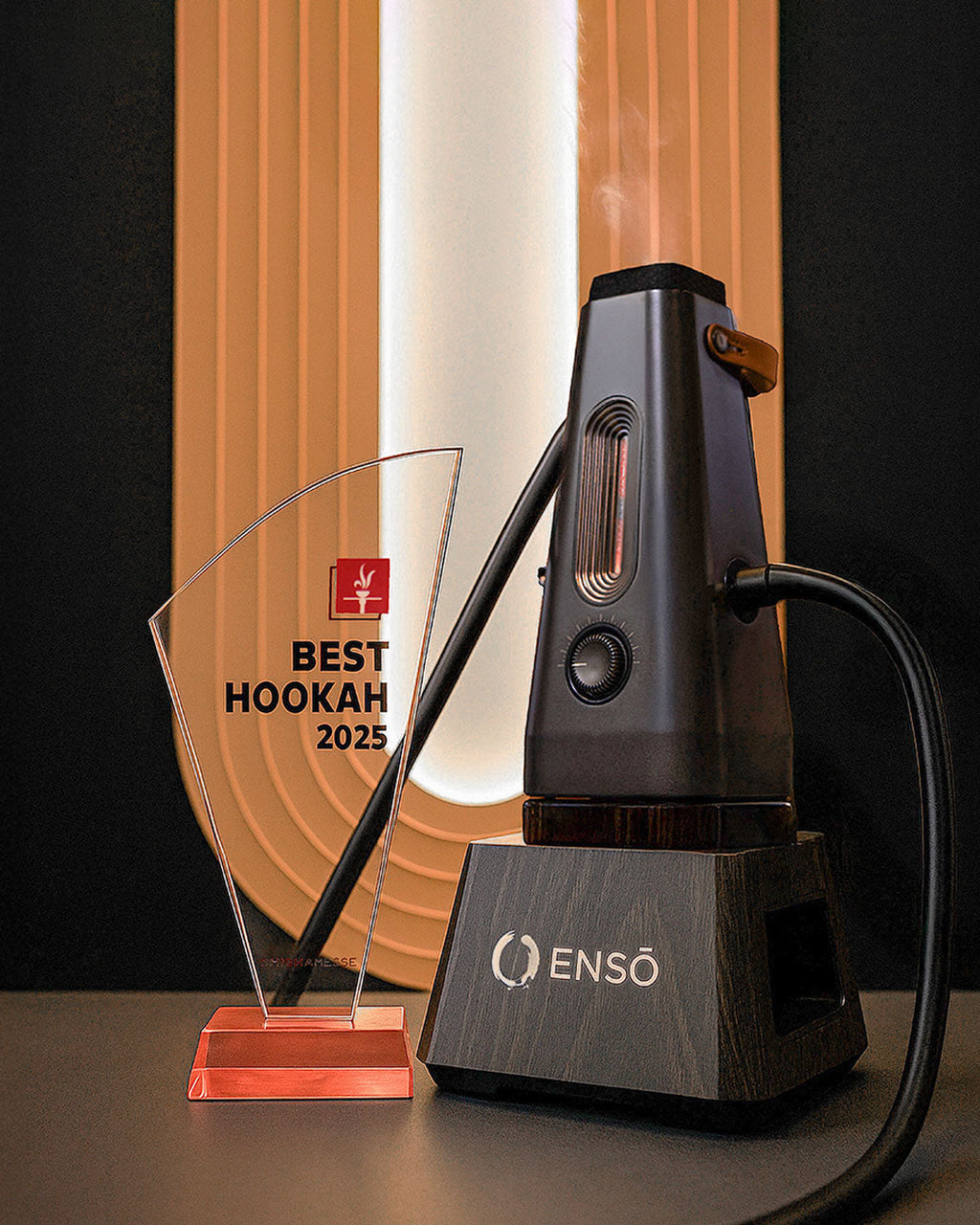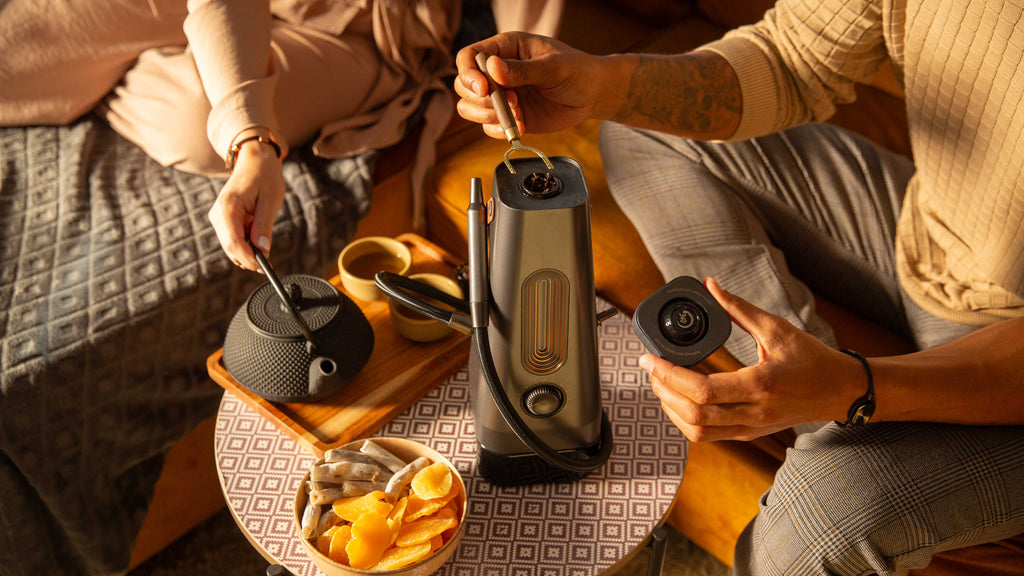What Is Shisha?

Shisha has been part of social life for centuries. It’s more than just flavored smoke—it’s tradition, community, and now, innovation. From the ancient coffee houses of the Middle East to modern lounges in New York, shisha connects people. But what exactly is it, and how has it evolved into devices like the Enso electric shisha? Let’s explore.
Defining Shisha
The word “shisha” refers to both the flavored tobacco mixture and the act of smoking it through a waterpipe (hookah). According to Wikipedia, shisha is “a single- or multi-stemmed instrument for vaporizing and smoking flavored tobacco (called mu‘assel), whose vapor or smoke is passed through a water basin before inhalation.”
The tobacco blend itself usually contains four components:
- Tobacco leaves – dark or light varieties
- Molasses or honey – adds sweetness and smoke density
- Glycerin – creates smooth, thick clouds
- Flavorings – fruits, mints, spices, or desserts
The water base cools and filters the smoke, making the session smoother than cigarette smoking. Unlike quick puffs from a cigarette, shisha is about long, relaxed drags and social conversation.
Origins and History of Shisha

Shisha’s story begins in the 16th century, with roots in India and Persia. Historians suggest it was first created in India when tobacco made its way from the New World. The earliest designs used a coconut shell as a bowl and a reed tube for inhalation.
By the time the Ottoman Empire had spread, hookah culture had already reached Turkey, Egypt, and the Levant. Coffee houses in Istanbul were filled with ornate hookahs, each session lasting hours. In Arab culture, smoking shisha became tied to hospitality and status—serving a guest a hookah was a mark of respect.
Later, shisha spread across Europe, North Africa, and Asia. In Egypt, for example, the café and shisha tradition remains alive today, with men and women gathering for tea, conversation, and shared smoke.
Today, shisha bars are found globally—from London’s Edgware Road to Dubai’s rooftop lounges to Bali’s beach clubs.
The Social and Cultural Role of Shisha
Unlike cigarettes, which are often solitary, shisha is inherently social. A group gathers around one pipe, sharing hoses or taking turns. Sessions can last one to two hours, usually accompanied by tea, coffee, or snacks.
In many cultures:
- It marks celebration (weddings, family gatherings).
- It’s tied to hospitality (welcoming a guest).
- It’s part of nightlife (lounges, clubs, and events).
Even the act of preparing shisha—packing the bowl, adjusting coals—has a ritualistic, almost meditative quality.
Traditional Shisha Setup

A classic hookah includes:
- Bowl (head): Holds the shisha tobacco and coals.
- Foil or heat management device (HMD): Separates tobacco from the charcoal.
- Stem: Connects the bowl to the water base.
- Water base (glass vase): Filters and cools the smoke.
- Hose: Through which smoke is inhaled.
Charcoal is placed on top of the foil or HMD to heat the shisha indirectly. This is why preparing a traditional hookah requires patience: lighting coals, managing heat, and replacing burnt pieces.
Common Flavors
One of the joys of shisha is the wide variety of flavors. Some of the most popular include:
- Double Apple – a classic, anise-like taste
- Mint – refreshing and often mixed with fruit
- Watermelon – sweet and light
- Blueberry, Grape, Peach – fruity crowd favorites
- Coffee or Cappuccino – rich, for night sessions
- Dessert mixes like vanilla, chocolate, or cinnamon roll
These flavors are often mixed to create signature blends—every lounge has its own “secret mix.”
Traditional vs. Electric Shisha

In recent years, technology has made its way into the hookah world. Devices like the Enso Shisha have modernized the experience. Let’s break it down:
| Feature | Traditional Shisha | Electric Shisha (Enso) |
|---|---|---|
| Heat Source | Charcoal (messy, ash, risk of burns) | Electric battery-powered heater |
| Setup | Requires coals, foil, heat management | Simple, press-button activation |
| Flavor Quality | Authentic, but can be harsh if overheated | Consistent, smooth, no burnt taste |
| Health Factor | Exposure to carbon monoxide from coals | No charcoal = cleaner inhalation |
| Portability | Not travel-friendly, requires setup | Compact, easy to carry, plug & play |
| User Experience | Traditional ritual, cultural feel | Modern, convenient, minimal effort |
Electric shisha eliminates the need for charcoal, which is one of the biggest hassles of traditional hookah. Instead of lighting coals and worrying about overheating, users get consistent heating at the push of a button.
Enso Shisha

The Enso Shisha represents this new era. Designed as a coal-free electric hookah, it preserves the flavor and cloud quality of traditional shisha while eliminating the hassle.
Key highlights:
- Rechargeable battery – portable, no cords during sessions
- Even heating – no harsh hits or burnt flavors
- Quick setup – no coal prep, just pack the bowl and press start
- Safe indoors – no smoke detectors triggered by coal
- Modern design – sleek, minimalist, perfect for lounges or home use
Imagine the social vibe of traditional shisha, but with the convenience of modern tech. That’s the promise of Enso: keeping the ritual alive, while updating it for today’s lifestyle.
Why People Choose Electric Shisha
- No Coal Mess: No ash, sparks, or fire hazards.
- Healthier Sessions: Reduced carbon monoxide exposure.
- Faster Setup: You’re smoking in minutes, not waiting 20 minutes for coals.
- Flavor Integrity: Heat is precisely controlled, ensuring flavors remain pure.
- Eco-Friendly: No need to burn wood-based charcoal.
For lounges, hotels, and beach clubs, electric hookah also means less training for staff and higher session turnover, which boosts ROI.
The Future of Shisha
The shisha world is moving in two directions:
- Tradition preserved: Many will always love the old-school ritual of coals and ornate hookahs.
- Innovation embraced: A growing number prefer modern, safe, and convenient solutions like electric shishas.
Both share the same essence: connection, relaxation, and flavor.
As Wikipedia notes, “Hookah smoking is a centuries-old tradition that remains popular today, evolving through time and technology.” That evolution is what makes Enso stand out—it doesn’t replace tradition, it builds on it.
Final Thoughts
So, what is shisha? It’s history. It’s culture. It’s a ritual that has survived for centuries. And it’s also evolving.
Traditional hookah brings charm, nostalgia, and cultural authenticity. Electric shisha—led by brands like Enso—adds convenience, safety, and modern design.
Whether you’re sitting in an old Cairo café or on a rooftop bar in Bali with an Enso, shisha is still about the same thing: slowing down, sharing flavors, and enjoying the company of others.
FAQs About Shisha
Is shisha the same as hookah?
Yes—“shisha” (Arabic for “glass”) often refers to the pipe and tobacco but is commonly used interchangeably with “hookah,” the English term for the same device.
How old is shisha?
Shisha traces back to the 16th century in Persia and India, gaining refined cultural prominence during the Ottoman era.
Is electric hookah healthier?
Electric hookahs avoid carbon monoxide from burning coals but still emit nicotine and other harmful compounds, so they’re not necessarily safer.
What is Enso Shisha?
Enso Shisha is a modern, elegantly designed hookah that combines traditional elements with sleek construction, modular parts, and portability.
How is shisha tobacco prepared?
Tobacco is soaked in molasses or honey and flavored with fruit, herbs, or fragrances. For traditional use, it's heated with charcoal; in electric versions, a heating element vaporizes it.
Can non-nicotine shisha be used?
Absolutely—herbal shisha options without tobacco or nicotine exist, offering flavorful smoke alternatives for non-nicotine users.




